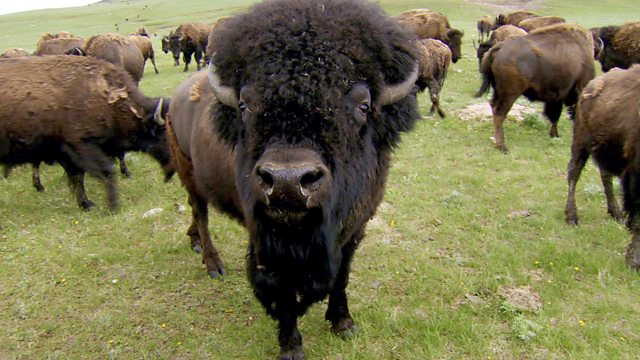
Frozen in Time
Professor Richard Fortey looks at how some species survived the ice age which began 2.8 million years ago, triggered by changes in the Earth's orbit around the sun.
It is estimated that 99 per cent of species have become extinct and there have been times when life's hold on Earth has been so precarious it seems it hangs on by a thread.
This series focuses on the survivors - the old-timers - whose biographies stretch back millions of years and who show how it is possible to survive a mass extinction event which wipes out nearly all of its neighbours. The Natural History Museum's Professor Richard Fortey discovers what allows the very few to carry on going - perhaps not forever, but certainly far beyond the life expectancy of normal species. What makes a survivor when all around drop like flies? Professor Fortey travels across the globe to find the survivors of the most dramatic of these obstacles - the mass extinction events.
In episode three, Fortey looks at the ice age. 2.8 million years ago - triggered by slight changes in the Earth's orbit around the sun and shifts in its ocean currents - the world began to cool. Within a few thousand years much of the planet was shrouded in a dense cloak of ice that would come and go until only 10,000 years ago. We call this age of ice - the Pleistocene Age - and it transformed the hierarchy of nature. This is the story of how a few specialist species that evolved to live in the biting cold survived into the present day.
Last on
More episodes
Previous
Next
You are at the last episode
See all episodes from Survivors: Nature's Indestructible Creatures
Credits
| Role | Contributor |
|---|---|
| Presenter | Richard Fortey |
| Writer | Richard Fortey |
| Series Producer | Shaun Trevisick |
| Director | Shaun Trevisick |
Broadcasts
- Tue 7 Feb 2012 21:00
 Wed 8 Feb 2012 00:00±«Óãtv HD & ±«Óãtv Four
Wed 8 Feb 2012 00:00±«Óãtv HD & ±«Óãtv Four- Wed 8 Feb 2012 03:00
- Sat 11 Feb 2012 19:00
- Sun 12 Feb 2012 02:55
- Mon 7 May 2012 22:00
- Tue 8 May 2012 02:00
- Tue 28 Aug 2012 21:00
- Wed 29 Aug 2012 03:10
- Tue 12 Feb 2013 20:00
- Thu 14 Nov 2013 20:00
- Fri 15 Nov 2013 01:00
- Sat 20 Sep 2014 19:00
- Sun 21 Sep 2014 03:00
- Mon 22 Sep 2014 23:10
- Sat 16 May 2015 19:00
- Sun 17 May 2015 02:30
- Sat 19 Mar 2016 20:00
